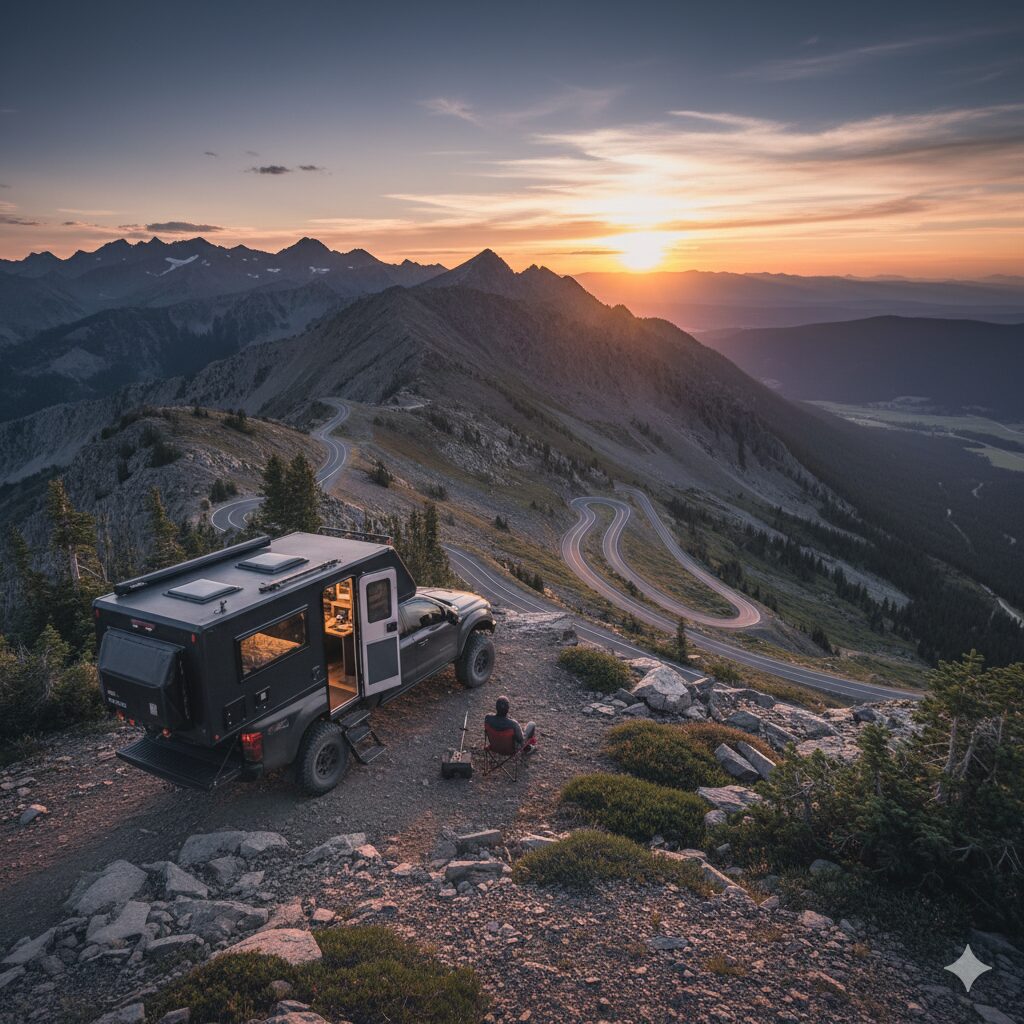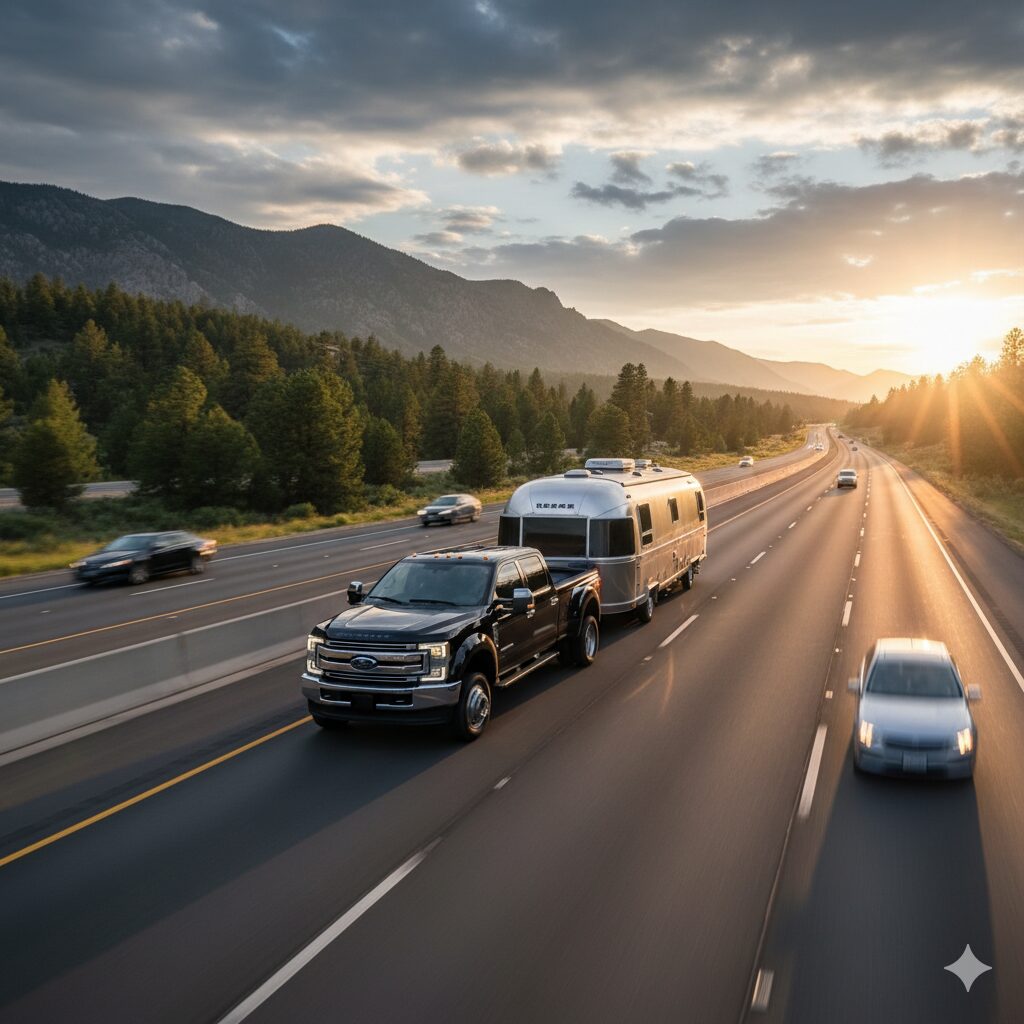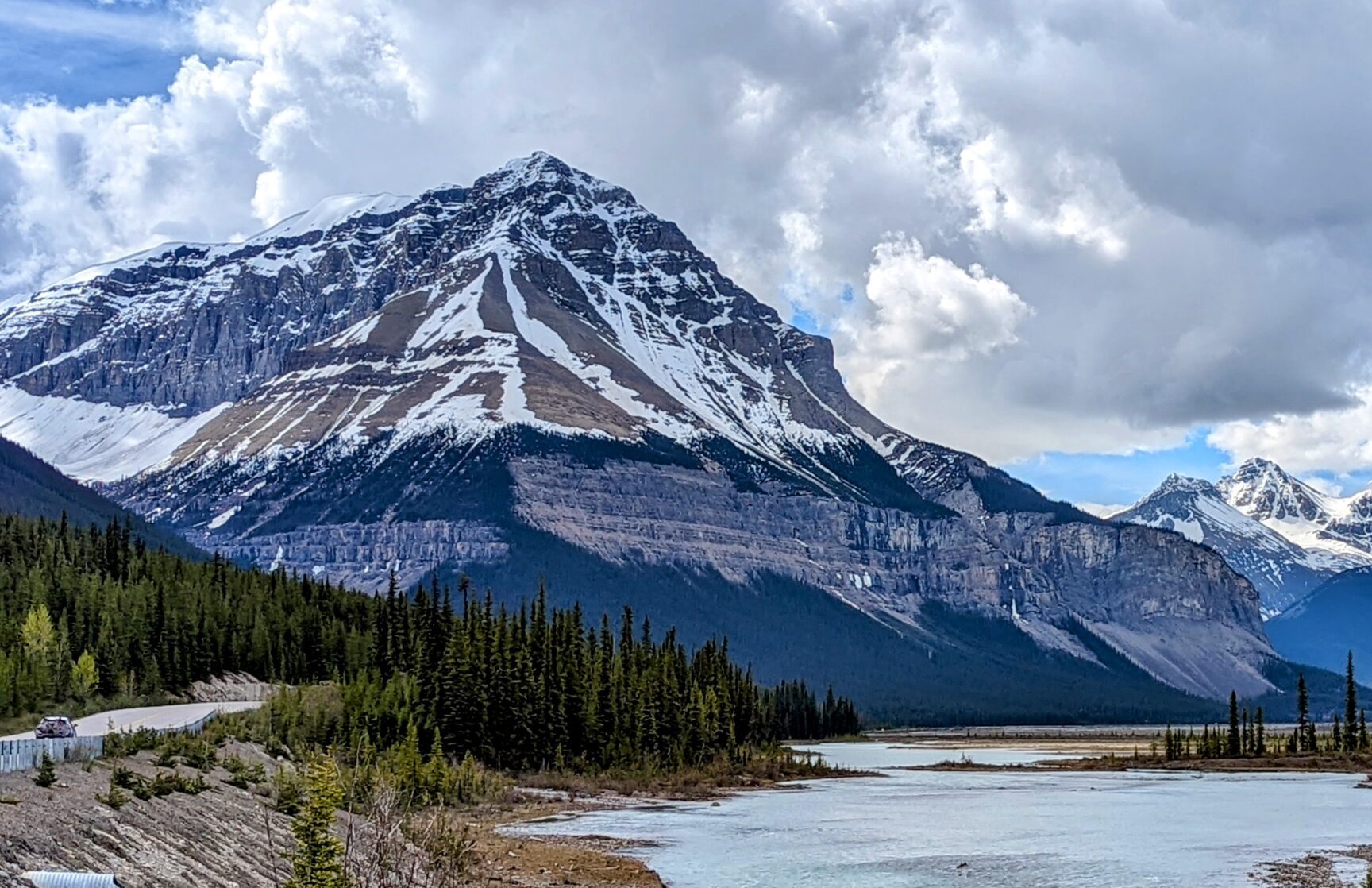We have traveled extensively by car, exploring diverse destinations—from a cross-country journey spanning California to Florida and back, to adventures through Calgary and the scenic Jasper Highway. We’ve driven from Madrid to the countryside, visiting Toledo and Segovia, toured Portugal from Porto to Lisbon, and traveled from California to British Columbia via Oregon and Washington, including numerous side trips to Arizona, Utah, and New Mexico. The thrill of moving from place to place never fades, and in most of our travels, our dog is right there with us!
Among motorized options, we preferred something agile that fits into regular parking spaces. This ruled out Class A and Class C motorhomes. Ultimately, Class B camper vans align best with our lifestyle and travel preferences.
While renting a car and exploring different places is enjoyable, the biggest challenge has been finding dog-friendly spots and arranging lodging at each stop. That’s why we’ve been considering recreational vehicles—especially Class B RVs. On long road trips, the toughest part is always ensuring we reach our lodging destination on days with reservations. With an RV, we gain much more flexibility: if we’re tired, we can rest in the back of the vehicle at a parking lot, find public land or campgrounds to stay, or still book a hotel if we prefer. This way, we have a wider range of options.



Why Choose Class B? RVs come in various classifications, primarily divided into two categories: Motorized (Class A, Class B, and Class C) and Towable (travel trailers, fifth wheels, pop-up campers, etc.). Class A motorhomes are the largest, resembling buses. Class B are compact camper vans, while Class C are mid-sized motorhomes built on truck chassis, featuring a distinctive cab-over bunk. Towables are non-motorized and must be pulled by a separate vehicle, offering a wide range of sizes, features, and price points. Then there are truck campers which are lightweight small boxes that sit on the bed of a truck that you bring to your destination.
The first decision is whether you want to tow or drive your RV. In my view, towables suit part-time or weekend travelers, or those who own large trucks and want to bring a spacious home to various destinations. However, for us, towables are less appealing due to their size. While smaller, lighter pod-style towables exist, they aren’t ideal for long-term, cross-country travel.
Truck campers are unique as they appeal to both weekenders and long term travelers alike. They are agile as you can have a very capable 4×4 truck with a camper on top. If you are interested, check out the Hawk+ from Four Wheel Overlanders. But the bathroom/shower options in these are usually limited and the nicer ones with premium options cost a good fortune.
Among motorized options, we preferred something agile that fits into regular parking spaces. This ruled out Class A and Class C motorhomes. Ultimately, Class B camper vans align best with our lifestyle and travel preferences.
When choosing a Class B RV, the next important decision is the chassis, which refers to the make and model the RV is built on. The most popular chassis in the US are the Mercedes-Benz Sprinter, Ford Transit, and Ram ProMaster. Many articles and videos compare these three options, but here’s the key takeaway: the Mercedes Sprinter is the most expensive, excels in 4×4 capability and ground clearance, making it ideal for off-road adventures, though it can be more challenging/costly to service. The Ford Transit provides a smooth ride, a higher roof for taller people, offers AWD options, and generally easier maintenance access. The Ram ProMaster is appreciated for its agility, front-wheel drive, and affordability, but it has less driver legroom and less off-road capable. Another factor to keep in mind when choosing a Class B is the wheelbase size. The Mercedes Sprinter is available with a 144, 170 and a 170 inch extended wheelbase. The Ford Transit comes in a 130, 148 and 148 inch extended wheelbase. The Ram Promaster comes in a 136 and 159 inch wheelbase. With the larger wheelbase, there is more room inside for amenities such as a larger bed, more storage space and a bathroom/shower. But with more options comes more weight to carry around to different destinations.
The next question to consider is whether you want to buy new or used, and if you prefer a prebuilt campervan from a manufacturer or a custom-built option. There are several reputable prebuilt manufacturers worth exploring. For example, Winnebago has been a trusted name since 1958. Other premium Class B manufacturers include Tiffin, Grech RV, Midwest Automotive Designs, and Airstream, known for their high-end cabinetry and leather-upholstered seats. However, choosing a prebuilt van means you’ll be limited to their specific models and layouts, which may include features you like but also some you might miss.
A custom campervan provides exceptional flexibility in both layout and functionality, tailored precisely to your individual needs. Designs vary widely—some offer ample rear storage for gear haulers, while others focus on alternative configurations. Customers can choose interior colors, materials, and opt for exterior modifications as part of the customization process. While custom builders deliver innovative solutions for diverse uses, their smaller scale means these vans are not immediately available and typically require 3 to 4 months for completion. Some builders we’ve explored include ADF Sprinters, Big Bear Vans, Rossmonster, and Nomadik Customs. Another option is Canadian custom campervan builders. With a favorable USD to CAD exchange rate, you can bring a van to Canada for conversion at places like Wilderness Vans, Vancini Conversions, or Shopdog, returning with a completed build at a more affordable price compared to U.S. custom campervan builders.
With so many options available, how do you choose the right one? The best approach is to try them out firsthand. Websites like Outdoorsy and AltCamp offer rentals of vans purchased from various manufacturers and custom campervan builders. This allows you to explore different layouts and features to see what fits your needs before making the significant investment of buying one. Also, consider used campervans—they’re often much more affordable than new models. Just be sure to have them thoroughly inspected, as most are beyond the 2-3 year warranty period that new builds typically include.
開著房車去旅行?
我們駕車旅行過很多地方,探索過各種各樣的目的地——從橫跨加州到佛羅裡達的跨國旅行,到穿越卡加利和風景如畫的賈斯珀高速公路的探險。我們從馬德里開車前往鄉村,遊覽托萊多和塞哥維亞,從波爾圖到里斯本暢遊葡萄牙,從加州經俄勒岡州和華盛頓州到不列顛哥倫比亞省,也多次前往亞利桑那州、猶他州和新墨西哥州。從一個地方到另一個地方的旅行總是令人興奮不已,而且在大多數旅行中,我們的狗狗都陪伴在我們身邊!
雖然租車探索不同的地方很愉快,但最大的挑戰是如何找到允許狗狗出遊的地點,並在每個站點安排住宿。正因如此,我們一直在考慮房車,尤其是B級房車。長途旅行中最困難的部分,莫過於確保在預訂日期到達住宿目的地。有了房車,我們擁有了更大的靈活性:如果累了,我們可以在停車場的車後座休息,也可以找個公共用地或露營地住宿,或者如果願意,還可以預訂酒店。這樣,我們的選擇就更豐富了。
為什麼選擇 B 級房車?房車種類繁多,主要分為兩類:機動房車(A 級、B 級和 C 級)和拖曳式房車(旅行拖車、第五輪房車、彈出式露營車等)。 A 級房車體型最大,類似巴士。 B 級是緊湊型露營車,而 C 級是基於卡車底盤打造的中型房車,配有獨特的駕駛室前置式舖位。拖掛式房車是非機動房車,必須由單獨的車輛牽引,提供各種尺寸、功能和價格選擇。此外,還有卡車露營車,它們是一種輕便的小箱子,可以放在卡車的車廂裡,然後拖到目的地。
首先要決定的是,你是想拖著房車還是開房車。在我看來,拖曳式房車適合兼職或週末旅行者,或者那些擁有大型卡車並想帶著寬敞的家去各個目的地的人。然而,對我們來說,拖曳式房車由於體積較大,吸引力不大。雖然市面上有更小、更輕的吊艙式拖車房車,但它們並不適合長期的跨國旅行。
卡車露營車的獨特之處在於,它既能吸引週末度假者,也能吸引長期旅客。它們靈活便捷,就像一輛性能強大的四輪傳動卡車,上面還可以加裝一輛露營車。如果你有興趣,可以看看 Four Wheel Overlanders 的 Hawk+ 露營車。不過,這類露營車的浴室/淋浴配置通常比較有限,而一些配置高級的高級露營車則價格不菲。
在機動房車的選擇中,我們更傾向於靈活、適合常規停車位的房車。這排除了A級和C級房車。最終,B級露營車最符合我們的生活方式和旅行偏好。
選擇B級房車時,下一個重要的決定是底盤,這指的是房車所基於的品牌和型號。在美國,最受歡迎的底盤是梅賽德斯-奔馳Sprinter、福特Transit和Ram ProMaster。許多文章和影片都會比較這三種選擇,但關鍵點在於:梅賽德斯-奔馳Sprinter價格最高,擁有出色的四驅能力和離地間隙,是越野探險的理想選擇,但其維修保養難度更大/成本更高。福特Transit行駛平穩,車頂較高,適合身材較高的人,提供全輪驅動選項,通常更容易維護。 Ram ProMaster因其靈活性、前輪驅動和經濟實惠而廣受好評,但其駕駛員腿部空間較小,越野能力較弱。選擇B級房車時需要考慮的另一個因素是軸距。梅賽德斯-奔馳Sprinter提供144英寸、170英寸和170英寸加長軸距。福特Transit提供130吋、148吋和148吋加長軸距。 Ram Promaster提供136吋和159吋的軸距。更大的軸距意味著車內空間更大,可以容納更大的床、更大的儲物空間以及浴室/淋浴間等設施。但選擇越多,攜帶到不同目的地的重量就越大。
接下來要考慮的問題是,您想購買新車還是二手車,以及您是喜歡製造商提供的預製露營車還是客製化露營車。有幾家信譽良好的預製露營車製造商值得考慮。例如,Winnebago 自 1958 年以來一直是值得信賴的品牌。其他高端 B 級露營車製造商包括 Tiffin、Grech RV、Midwest Automotive Designs 和 Airstream,它們以高端櫥櫃和皮革座椅而聞名。然而,選擇預製露營車意味著您將只能選擇其特定的型號和佈局,這可能會包含您喜歡的功能,但也可能會錯過一些您可能錯過的功能。
客製化露營車在佈局和功能方面均具有極大的靈活性,可根據您的個人需求進行精確客製化。設計多種多樣——有些設計為裝備運輸車提供充足的後部存儲空間,而有些則側重於替代配置。客戶可以選擇內裝顏色、材質,並選擇在定製過程中進行外觀改裝。雖然客製化製造商為各種用途提供創新解決方案,但其規模較小意味著這些貨車並非立即可用,通常需要 3 到 4 個月才能完成。我們探索過的一些製造商包括 ADF Sprinters、Big Bear Vans、Rossmonster 和 Nomadik Customs。另一個選擇是加拿大客製化露營車製造商。由於美元兌加元匯率優惠,您可以將貨車帶到加拿大,在 Wilderness Vans、Vancini Conversions 或 Shopdog 等地進行改裝,與美國定制露營車製造商相比,您可以以更實惠的價格返回完整的改裝件。
面對如此眾多的選擇,如何選擇適合的呢?最好的方法就是親自體驗。像 Outdoorsy 和 AltCamp 這樣的網站提供從不同製造商和客製化露營車製造商購買的廂型車租賃服務。這讓您在進行重大投資購買之前,可以探索不同的佈局和功能,找到最適合您需求的車型。此外,也可以考慮二手露營車——它們通常比新款便宜得多。但一定要對它們進行徹底檢查,因為大多數二手車的保固期都超過了新車通常提供的 2-3 年。

Leave a Reply